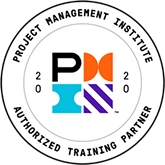Introduction to Kanban
- Traditional Classroom: 1-day
- Virtual Instructor-led: Two 3-3.5 hour sessions; Three 2-hour sessions
This comprehensive, one-day course guides participants in the basics of the Kanban methodology, how to use a Kanban system, and how to introduce this method to an organization.
Target Audience
Individuals who will benefit from this course include those who take responsibility for improving delivery of products and services to the customers of their technology, and, speaking more broadly, professional service businesses.
Learning Objectives
- Understand the concepts, principles, and practices underlying the Kanban method.
- Gain a deeper understanding of how Kanban systems work.
- Describe how Kanban enables making work visible and how to measure and manage workflow.
- Learn on overview of the STATIK (systems thinking approach to introducing Kanban) method for implementing Kanban.
Course Outline
Module 1: Fundamental Kanban Basics
- What Is Kanban?
- Foundation Principles of Kanban
- Change Management Principles
- Service Delivery Principles
- Discussion: Foundational Principles of Kanban
Module 2: Kanban Vocabulary
- Kanban Board
- Kanban System
- Classes of Service
- Kanban Card
- Push System vs. Pull System
Module 3: Work in Progress (WIP) Limits
- Example: Drive-Thru Example to Understand WIP
- Little’s Law Leverage
- Discussion: Benefits of Limiting WIP
Module 4: Working with the Kanban Board
- Reading a Kanban Board
- Using a Kanban Board
- Kanban Board Design
- Blocking Issues and Defects
- Discussion: Handling Blocked Items
Module 5: Metrics of Kanban
- Cumulative Flow Diagram (CFD)
- Little’s Law Applied to CFD
- Flow Efficiency
- Probabilistic Forecasting
- Scatterplot
- Jira – Control Chart
Module 6: Practices of Kanban
- Visualize
- Limit WIP
- Manage Flow
- Make Policies Explicit
- Implement Feedback Loops (Cadences)
- Improve Collaboratively, Evolve Experimentally
- Experimentally
Module 7: STATIK Method for Implementing Kanban
- Understand What Makes the Service “Fit for Purpose”
- Understand Sources of Dissatisfaction Regarding Current Delivery
- Analyze Sources of and Nature of Demand
- Analyze Current Delivery Capability
- Model the Service Delivery Workflow
- Identify and Define Classes Of Service
- Design the Kanban System
- Socialize Design and Negotiate Implementation
MDI1054 Course Code
For more information on this topic, as well as how Corporate Education Group can help power your organization’s performance, contact us via email or call 1.800.288.7246 (US only) or +1.978.649.8200. You can also use our Information Request Form!



